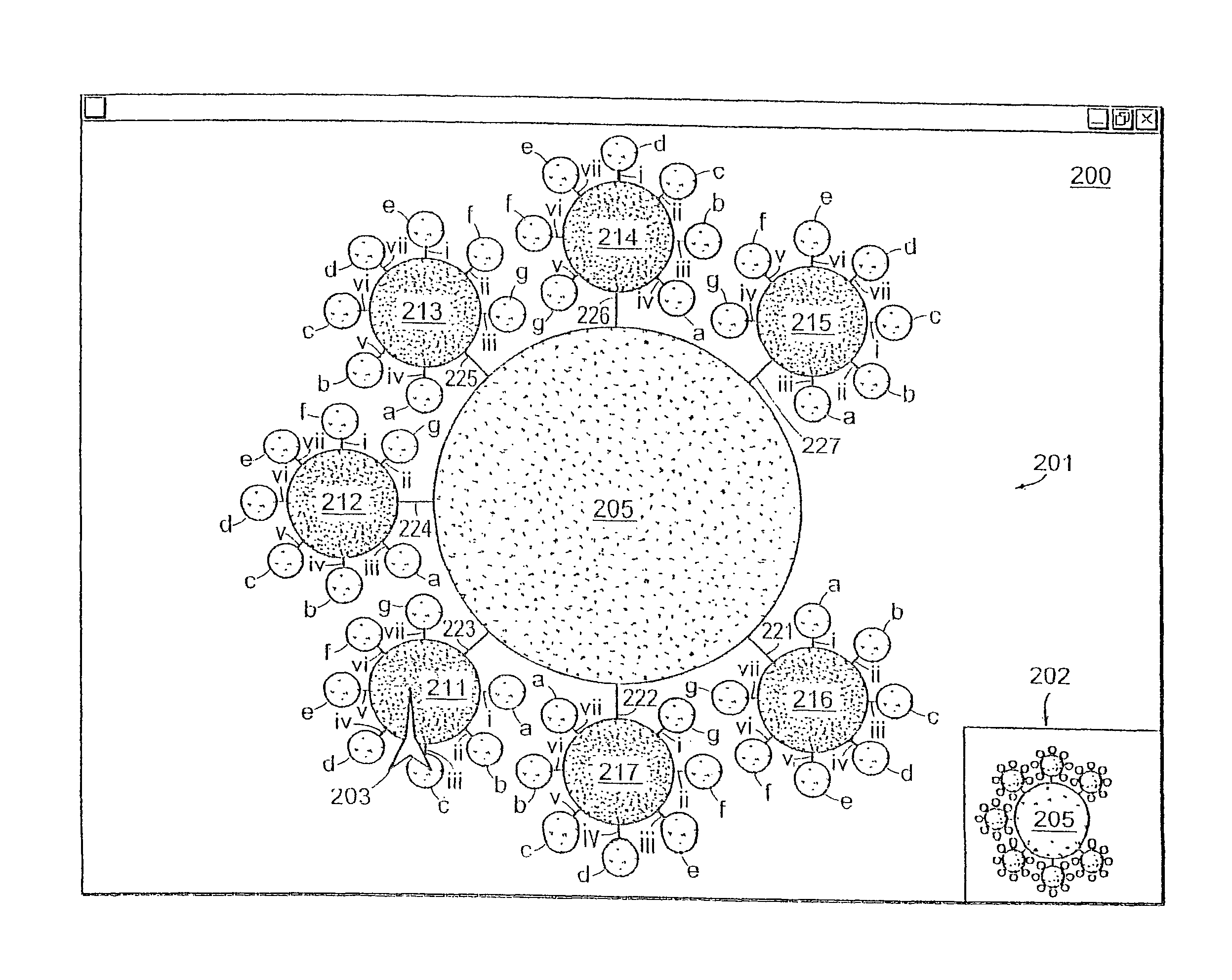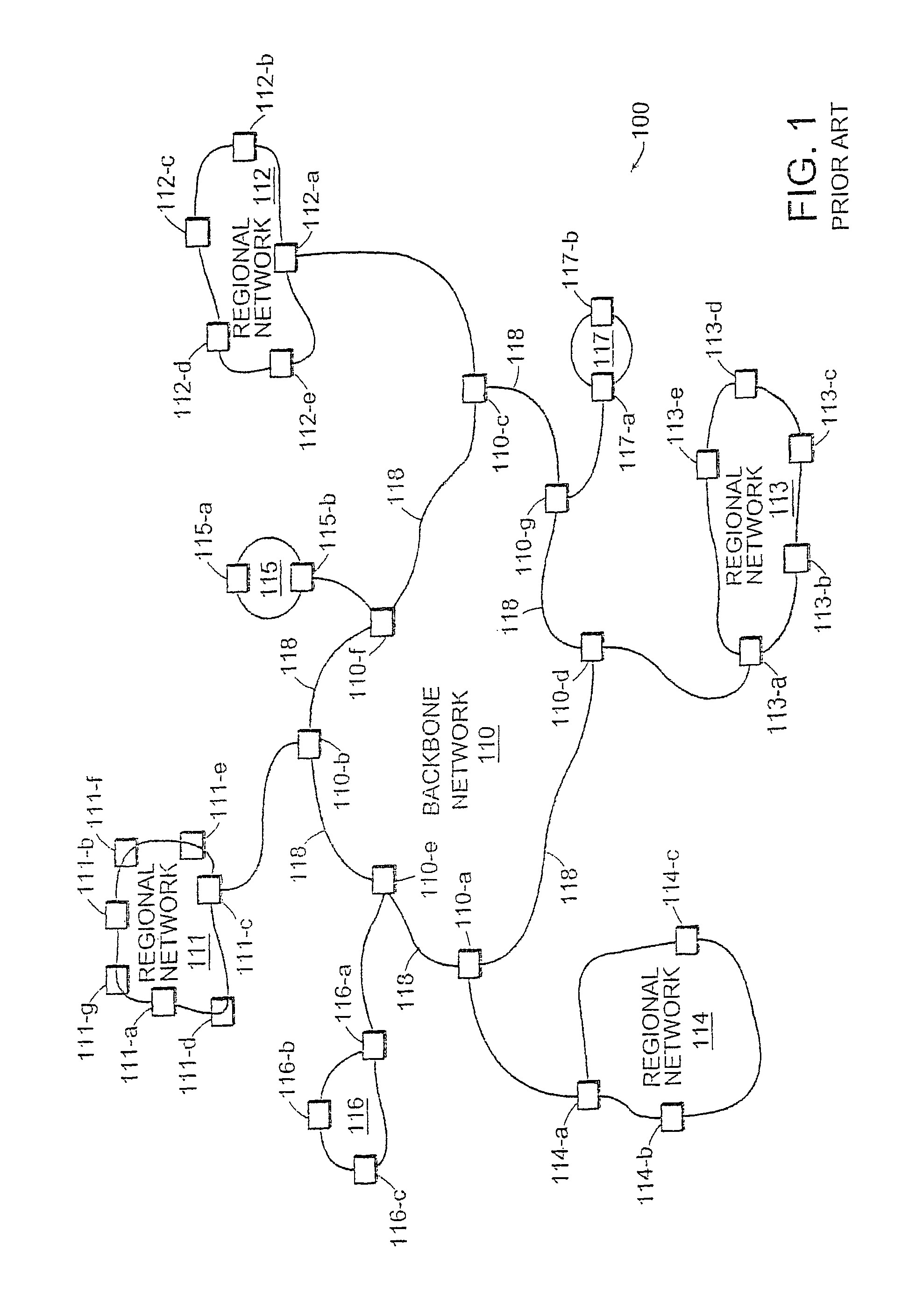Method and apparatus providing a graphical user interface for representing and navigating hierarchical networks
- Summary
- Abstract
- Description
- Claims
- Application Information
AI Technical Summary
Benefits of technology
Problems solved by technology
Method used
Image
Examples
Embodiment Construction
[0036]FIG. 1 illustrates a high level view of the architecture of a typical managed computer network 100. FIG. 1 is used to illustrate the concepts of hierarchical components and how a computer network can be viewed and represented as such. The invention, however, is not limited to being applied only to represent a hierarchical computer network architecture such as that of FIG. 1, even though preferred embodiments of the invention are well suited for this purpose. As will be explained in more detail later, the invention can be used to represent other forms of hierarchical data as well.
[0037]In FIG. 1, managed computer network 100 includes backbone network 110 which interconnects regional networks 111 through 117. Backbone network 110 is formed from high speed routers 110-a through 110-g interconnected with high speed data links 118. Each regional network 111 through 114 is formed from sets of routers labeled “a”, “b”, “c” and so forth within each regional network 111 through 117. Ma...
PUM
 Login to View More
Login to View More Abstract
Description
Claims
Application Information
 Login to View More
Login to View More - R&D
- Intellectual Property
- Life Sciences
- Materials
- Tech Scout
- Unparalleled Data Quality
- Higher Quality Content
- 60% Fewer Hallucinations
Browse by: Latest US Patents, China's latest patents, Technical Efficacy Thesaurus, Application Domain, Technology Topic, Popular Technical Reports.
© 2025 PatSnap. All rights reserved.Legal|Privacy policy|Modern Slavery Act Transparency Statement|Sitemap|About US| Contact US: help@patsnap.com



